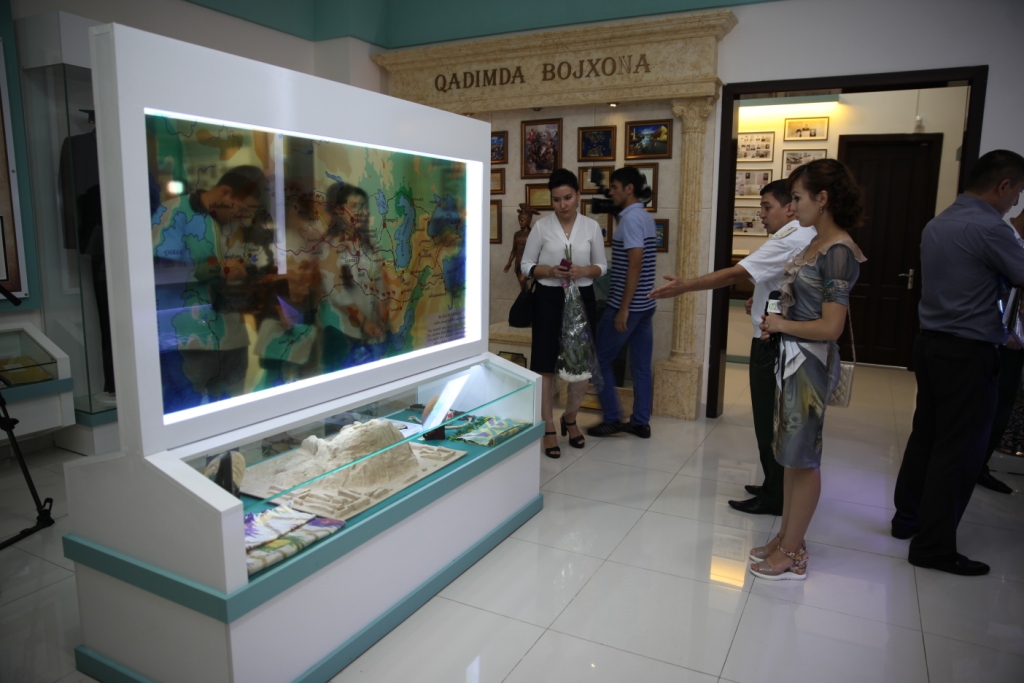
After the independence of our country, the preservation of the material and spiritual wealth of our people has become a state policy. In this regard, the Customs authorities were also responsible for the task. On February 9, 1996, the Ministry of Justice of the Republic of Uzbekistan issued a Decree # 227 “On the Control of the Export and Import of rare cultural values from the territory of the Republic of Uzbekistan” on the basis of which the Customs authorities made a large-scale measures against illegal circulation of cultural values.
It should be noted that the most effective way to demonstrate the rarity of cultural values that were confiscated in favor of the state as a result of the rapid actions in this direction, and to acknowledge the honorable service of the customs officers was to organize a museum
According to this requirement, and by the order of the Chief Customs office of the State Tax Committee of the Republic of Uzbekistan dated August 20, 1996, №181 “On the Establishment of the Museum of Customs History” was established the History Museum of the Customs Service. The main responsible for organization of this museum was the Tashkent Customs Training Center.
However, this museum was not intended to showcase only the rarities or types of weapons seized. He has now set the goal of maintaining the state’s economic security, playing a role in protecting the domestic market and human rights, health and morale, and training customs officers in the spirit of patriotism and self-sacrifice.
By the order of the State Customs Committee “On further improvement of the Customs Museum activities” from 17 May 2001, the Customs History Museum was reorganized in the current building of the State Customs Committee. With this order, special attention was paid to registration of museum exhibits and increase of material responsibility. Since then, responsibility for the “Customs History” museum have been assigned to the Public Relations and Mass Media Department of the State Customs Committee.
At the time, there were over 1200 exhibits, literature, and material in the museum. The museum exposition included more souvenirs, albums and books provided by foreign partners, inventory of confiscated material confiscated during smuggling and customs violations, copies of rare cultural treasures and weapons than it’s own exhibits.
The adoption of the Law of the Republic of Uzbekistan “On museums” on September 12, 2008 has become an important legal basis for the regulation of relations in the field of museums organization and activity. In particular, the law serves to support and improve the activities of museums, preserve, study and promote the unique exhibits kept there.
On July 11, 2009 the Order No. 184 of the State Customs Committee “On the further improvement of the Customs History Museum” was approved. This decree encompassed the broad introduction of the customs history and rich experience on the basis of time requirements, updating museum exhibits.
In accordance with the decree, the Museum Council was established to improve museum activities on the basis of new information and exhibits, which included the main departments of the central office of SCC and their heads.
One of the most important aspects is the fact that 13 years after the establishment of the museum, the Charter of the Customs History Museum was first approved. The Charter stipulates the main goals and objectives of the museum, the composition of the museum and its procedures, the rights and obligations of the museum staff.
Taking into account these factors, the Association of Veterans of the Customs Service of Uzbekistan presented a unique solution. In March 2013, the Association’s proposal to establish a completely new institution, a Customs Spiritual Center was created on the basis of the Customs History Museum, which has not been observed in the national and global practice.
Currently, the center is being set up.
The Center of spirituality of the State Customs Committee of the Republic of Uzbekistan also tells about the glorious history of the country's customs, its recent past and its development in the years of independence.
26.02.2018































